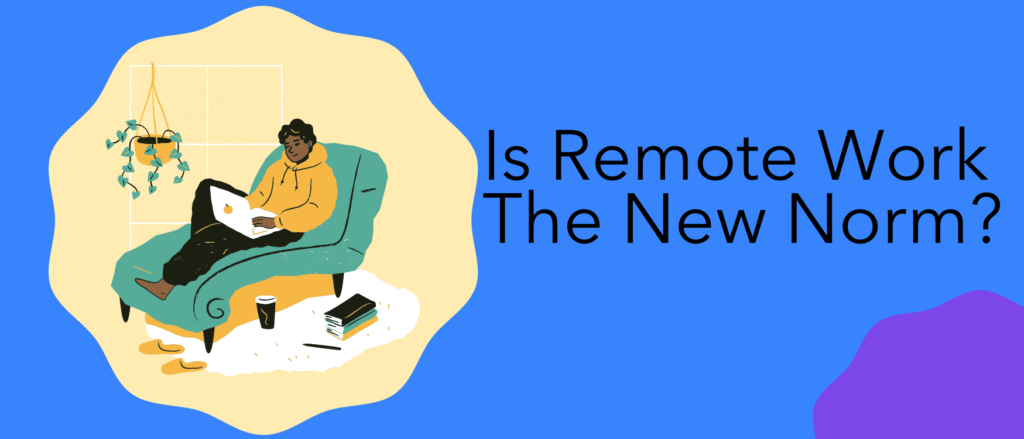Are you tired of your mundane daily schedule, with its lengthy drive, fluorescent lights, and stuffy office? Do you find your daily journey to the office to be dreadful? If so, you’re most definitely not by yourself. One of the interesting new trends in the quickly changing business landscape is the advent of global remote work.
This is a lifestyle that a lot of individuals have embraced, including company entrepreneurs, stay-at-home parents, and digital nomads. For remote workers, the ability to work whenever, whenever, and whatever they like is advantageous as it helps them better balance their personal and work lives.
Following a radical change in workplace culture, remote work has gone from being a novel idea to being essential to modern professional life. A new age of job prospects has emerged due to the combination of cutting-edge technology, shifting perspectives on work-life balance, and the internet’s ability to promote worldwide communication. This extensive study examines 10 different distant career pathways that correspond with the varied skill sets and goals of today’s workforce.
The Rise of Remote Work
The COVID-19 pandemic has prompted businesses worldwide to adapt to stay-at-home orders and social distancing regulations, with remote work becoming a significant shift, with some temporary changes expected.

Between 2009 and 2019, remote work in Europe remained consistent, with occasional remote work being twice as common as permanent. The pandemic increased Zoom meetings, and by 2022, 16% of jobs on LinkedIn are hybrid or fully remote, with 73% of global teams containing remote workers.
Remote work has become increasingly popular due to its positive impact on employees’ work-life balance, increased productivity, and greater access to talent. Longer commutes to the office are more favorable, and remote work can save employees an average of £1000 annually. Additionally, remote work offers greater access to talent for employers.
Remote work can lead to challenges such as difficulty in switching off after work, decreased visibility in promotions and bonuses, and feelings of loneliness. Remote workers may face greater mental health concerns due to isolation, as Zoom meetings replace social interaction, and may struggle with the perceived lack of office-based support.
Navigating Remote Job Opportunities
Remote work is revolutionizing the modern workplace, offering employees flexibility, better work-life balance, and global access. Employers benefit from reduced overhead costs, increased productivity, and access to a larger talent pool. However, remote hiring presents challenges such as difficulty in assessing candidates’ soft skills, lack of face-to-face interaction, and potential communication barriers due to time zone differences. To succeed, both employees and employers must understand the advantages and challenges of remote hiring, develop strategies for successful remote hiring, and implement best practices for managing remote teams. By understanding these challenges, both parties can make informed decisions about their careers or businesses.

Remote work offers flexibility, work-life balance, and global access, but challenges like skill assessment, communication barriers, and isolation can hinder success. Employers should develop strategies for successful remote hiring, manage remote teams, and maintain a strong company culture for a positive work environment.
The COVID-19 pandemic has accelerated remote work, offering benefits like flexibility, talent access, and reduced costs. However, it also presents challenges like assessing soft skills and communication barriers. Employers must understand these opportunities and implement best practices for remote hiring and management. Zunch Staffing can help navigate this landscape, helping employers find top remote talent and achieving better work-life balance.
The Remote Job Landscape
The remote work landscape is evolving due to transformative shifts in the way we work. Hybrid work models, which combine elements of both in-office and remote work, offer flexibility and adaptability for employees. They allow them to divide their work time between physical office spaces and remote locations, allowing them to tailor their work settings accordingly. Organizations adopting hybrid work models often invest in advanced communication and collaboration technologies to ensure effective collaboration.

Hybrid work models offer reduced commute times, improved employee satisfaction, and work-life balance. Upskilling and digital literacy are crucial for success, with upskilled professionals experiencing faster career growth. Advanced collaboration tools and employee well-being are essential in remote work.
Remote work is transforming the way businesses operate, with companies prioritizing employee well-being and adapting to the new paradigm. Companies are investing in ergonomic support, professional development, and clear communication to enhance productivity and well-being. However, cybersecurity challenges are increasing, including phishing attacks, endpoint vulnerabilities, and home network insecurities. To address these, organizations are implementing comprehensive employee training, robust endpoint protection, VPN implementation, and multi-factor authentication. Upskilling employees in cybersecurity is also crucial. The future of remote work is characterized by innovation, adaptability, and a focus on employee well-being.
Creative Pursuits in a Virtual Canvas
The demand for visual content is increasing, leading to an increase in remote graphic design jobs. Graphic designers create visually appealing designs using typography, images, colors, and other design elements to communicate ideas and messages. They work in fields like advertising, marketing, web design, print media, and branding. The process involves understanding the client’s needs, researching the target audience, conceptualizing ideas, sketching layouts, selecting colors and fonts, and producing the final design product. Remote graphic designers create visual solutions for clients or businesses, such as logos, websites, marketing materials, and social media graphics.

To be a successful remote graphic designer, one needs technical and soft skills. These include proficiency in design software, knowledge of design principles, attention to detail, communication skills, time management, creativity and problem-solving, collaboration, and knowledge of web design and development. These skills are essential for creating high-quality designs that effectively communicate messages and ideas to the target audience.
A graphic designer’s main responsibilities include creating and designing graphics for websites, social media, advertising, and marketing materials, collaborating with clients, developing design concepts, choosing colors, images, and typography, delivering designs that meet clients’ requirements, and staying updated with design trends. The salary of a remote graphic designer varies based on experience, location, and industry, with the median annual wage being $52,110 in the US.
Managing Projects from Afar
COVID-19 has forced companies to transition employees to remote work, with many predicting that this model will continue beyond the crisis. To successfully manage remote projects, companies must manage people and software tools effectively. While some employees may feel isolated and disconnected, others may find a balance between work and personal life. Flexibility in working hours and wellness programs can help employees cope with stress.

Team communication is crucial for maintaining quality and collaboration. Modern technologies, such as video calls, can help increase collaboration, speed up decision-making, and fill in social communication gaps. To avoid pointless calls, companies should invite relevant people, be deliberate about the purpose of video calls, prepare in advance, and follow the agenda. There are many free and paid video conferencing software available, such as Hangouts Meet, part of Google G Suite.

The company uses Jira software for managing agile projects, along with cloud-based collaboration tools like Slack, Jira, and Confluence by Atlassian. Slack is used for daily project-specific communication, while Jira serves as the activity hub for managing and tracking projects. Confluence is used for storing and sharing relevant information, such as the company’s Intranet, user story specifications, solution designs, meeting notes, and action and risks logs. All three tools are fully integrated, ensuring no duplication of work and accurate information.
The Human Touch in Remote Customer Service
Organizations often train their customer service staff to use a script consisting of greetings and slogans. This approach often results in customers needing more support, leading to frustration and potential loss of business. A script can also make employees appear unengaged and personable, making it difficult for customers to feel they are being helped effectively. It also prevents staff from being on the same page with the customer, making interactions less effective.

Organizations often train their customer service staff to use a script consisting of greetings and slogans. This approach often results in customers needing more guidance and support, leading to frustration and potential loss of business. A script can also make employees appear unengaged and personable, making it difficult for customers to feel they are being helped effectively. It also prevents staff from being on the same page with the customer, making interactions less effective.
Financial Freedom in a Remote World
The global pandemic has led to a surge in remote work, with accounting and finance becoming the fifth most popular field of remote work. Remote accountants are using technologies like cloud computing and video conferencing to collaborate with clients from anywhere with an internet connection. 74% of professionals expect remote work to become standard, and online accountants can perform the same tasks as traditional accountants, including recording expenses, documenting transactions, preparing reports, analyzing data, preparing tax returns, and offering advice on cost reduction and revenue improvement.

Cloud-based accounting software offers numerous benefits for accountants, including business continuity, faster work completion, and flexibility. 94% of accountants have adopted cloud accounting, and accounting teams and clients can collaborate anytime, anywhere with an internet connection. Outsourcing accounting services can also provide accountants with the opportunity to focus on growing their businesses and providing excellent advice to clients. In conclusion, remote accounting is becoming a permanent arrangement for many firm owners, even as the world recovers from the pandemic.
The pandemic has accelerated remote work, with accounting and finance becoming the fifth most popular field. Accountants use cloud computing and video conferencing to collaborate with clients, performing tasks like expense recording and tax preparation. Cloud-based software offers business continuity, faster completion, and flexibility while outsourcing accounting services allows accountants to focus on growth and client advice.
Education and Learning in the Virtual Classroom
Online education has gained popularity over the past decade due to its benefits over traditional classroom learning and remote learning. It allows students to access course materials from anywhere, access video lectures, and learn from experienced educators. Parents should encourage their children to learn online as it is becoming more widespread, allowing them to manage their time and perform various tasks. However, some students may face negative consequences, such as missing face-to-face interaction with teachers, difficulty accessing basic technology, and limited specialized help. Additionally, some teachers may have a difficult attitude towards online learning. Despite these challenges, online education has influenced K-12 classrooms and colleges for over 20 million students since 1997, with live video features like FaceTime and Hangouts making these platforms accessible to more students across various settings.

Virtual classrooms have completely changed the face of education by giving students access to unmatched learning and growth possibilities. Virtual classrooms’ adaptability, reachability, and interactive features enable students to succeed in a fast-changing digital environment.
Healthcare from a Distance
Advanced telecommunications and computer technologies are being utilized to enhance healthcare and expand access, particularly during the COVID-19 pandemic. Governments responded quickly to high demand and expanded telemedicine services, utilizing technology to transmit knowledge from healthcare workers to patients.

Telemedicine is the use of electronic communication technologies to provide healthcare when distance separates participants. It involves virtual interaction between physicians and patients, with the first telemedicine experiences dating back to the 1860s. The 20th century saw the repurposing of telegraphs and morse code for medical care. With the advent of telephone networks, satellites, space technology, and the internet, telemedicine has rapidly expanded.

The COVID-19 pandemic has highlighted the need for ethical and legal considerations in telemedicine services, including informed consent, privacy, confidentiality, patient identification, and patient autonomy. Social issues include determining whether low socioeconomic countries should invest in improving telemedicine services over other areas like agriculture, water safety, or education. Health equity and access are crucial, especially for the elderly, disadvantaged, and minorities without access to technology. Guidelines and codes of ethics have been drafted to address these concerns, but cultural and socioeconomic differences and local stakeholder viewpoints may affect their adoption. Regulatory policies should address cybersecurity, licensure, liability, and malpractice.
The Future of Remote Work
Remote work is becoming the “new normal” in the workplace, with nearly 48% of the global workforce expected to adopt a hybrid work model within the next two years. Telecommuting offers numerous benefits for employees and employers, including flexible working hours, elimination of long commutes, a less stressful environment, and location independence. Companies can implement strategies that prioritize employee well-being and improve work-life balance. Remote work also offers lower business costs, reduced travel expenses, cost-effective compensation and benefits, increased employee productivity, and access to global talent. However, challenges such as loneliness and difficulty focusing must be addressed to ensure a thriving future for remote work. Companies must adapt to these changes and prioritize employee well-being to avoid the loss of valuable talent in the long run.

Remote work is becoming the future of work in 2023, offering benefits like flexibility, cost savings, and access to a global talent pool. Companies must stay updated on remote work trends and invest the necessary tools and resources to thrive. BandaPixels offers remote development services for web app ideas, aiming to help businesses adapt to this new reality.
In summary, the new landscape of labor is characterized by infinite potential, connectedness, and flexibility. Today’s professionals have an unmatched chance to direct their careers by utilizing remote work to achieve a balance between their personal and professional goals. The distant career pathways covered in this guide provide more than simply work chances; they are doors to a completely new way of living, one in which professional advancement is not restricted by geography. We are paving the way for a day when the traditional office is the only choice in the rich tapestry of professional life as we navigate this distant revolution and embrace the diverse and dynamic terrain of remote work. Welcome to the new world of work, where the boundaries of possibility are defined by the extent of one’s imagination and the reach of the internet.








